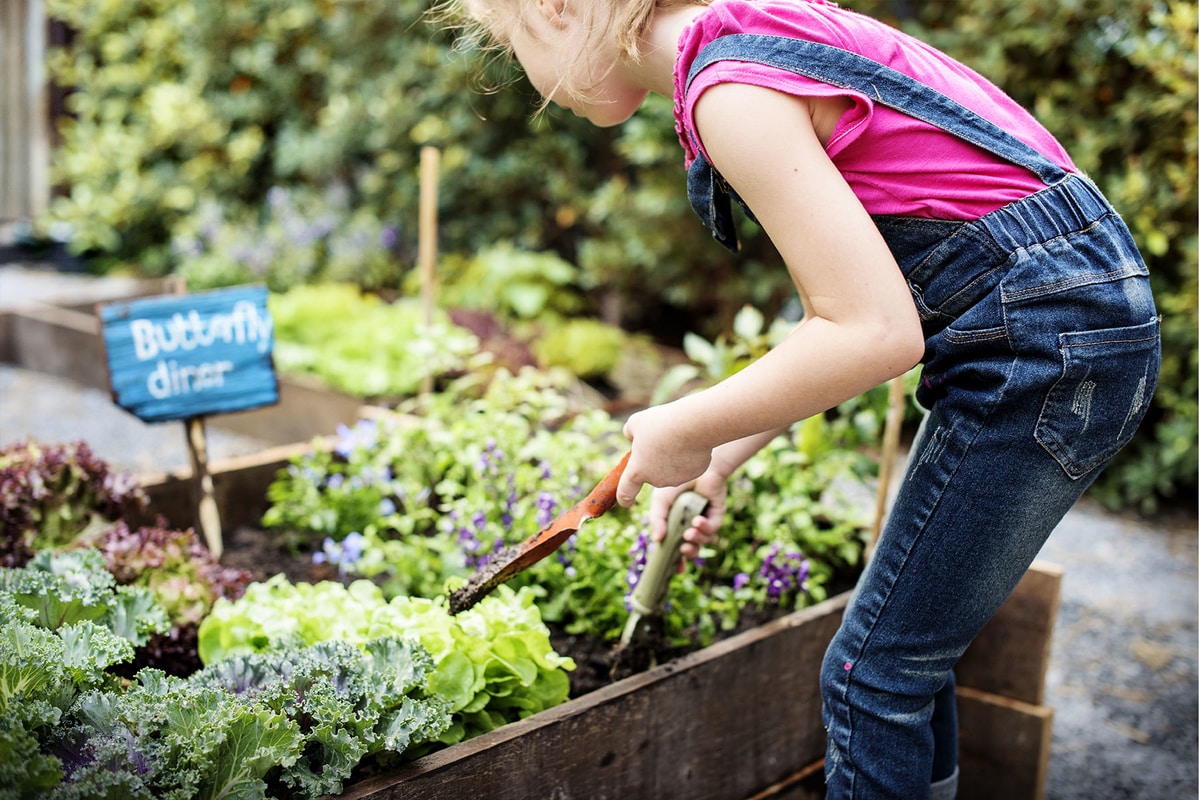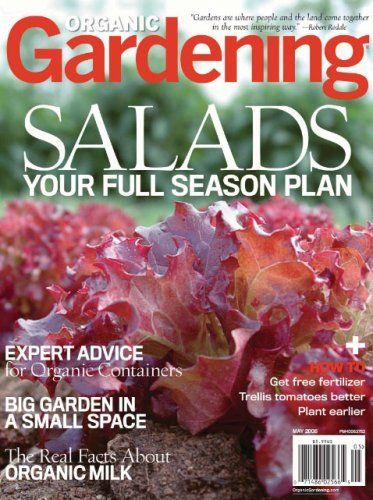Table of Content
Another guard framework that works is getting the assistance of Mother Nature as birds, specific bugs, and even amphibians have shown to be valuable. At the point when your ideal area has been found, the time has come to develop the soil. This will require cultivating tools and a pair of gloves to remove any weeds in the area. This could need a few days to prepare the site for planting. Remember, new weeds develop after some time, so you must examine the area occasionally. Crop rotation is a proven method used to keep soil optimal each season.

Starting an organic garden requires you to follow the right steps involved. If you are a beginner, you have to implement certain practices when starting an organic garden. This way, it will be much simpler to grow healthy crops. From the early years, farmers have used crop rotation to improve the quality of planting soil. Crop rotation involves moving your plants to a different section of your garden from time to time, at least once a year.
Apply organic compost
Regularly taking off the green portions of weeds will deprive them of the nourishment they need to continue growing. Weeds are any plant you don't want growing in an area, and may include invasive ornamental or productive plants, such as ivy and mint. Test the pH of your soil by buying pH test strips from a garden store. Stir a handful of soil with lukewarm distilled water until it's the consistency of a milkshake, then dip the pH test strip in. Hold it there for seconds, then compare the strip to the test kit's key.The pH of your soil should be somewhere between 5.5 to 7.0 for plants to thrive.
You can examine your garden twice a week and keep an eye out for fresh dandelions, bindweed, and purslane. You’ll want to test the ground you’re using to plant your vegetables in and see if it’s a decent spot by applying a bit of manure and blending it in with the soil. Adding an organic plant food periodically will help boost plants’ production and keep them happy.
Top Organic Gardening Tools
Simply put, it is the process of growing plants without the aid of chemical fertilizers and insecticides. Every garden has weeds; the important thing is to control them so they don’t take too many of the nutrients away from your plants. The safest way to remove weeds is to pull them out by hand and use a trowel to get the roots. Once you’ve removed the weeds, you can help minimize new ones by spreading organic mulch such as grass clippings, straw or wood chips on the garden bed. This will also help the soil retain water and will enrich it as it breaks down. Weeds are tenacious, so no matter what mulch you use, you’ll still have to pull them out when new ones pop up.
Once you apply this mix, you rest assured of a healthy and abundant harvest. Get rid of any diseased plants as soon as you notice them. Failure to do so would infect all the plants with the disease. As a gardener, it is best to keep evaluating the condition of the garden from time to time. Your garden will look neater and more appealing when you apply organic mulch.
Organic Gardening Magazine
It must be rich in nutrients, have good drainage and water holding capacity, and an optimum pH. Residential soils usually need enhancement. It can be done by adding organic matter, such as compost. According to the US Department of Agriculture , food that is at least 95% organic is labeled as ‘organic food’. Moreover, organic gardening at home can be a fun practice too. Some may think why to start an organic garden at home when you can buy organic food from the market? Well, organic food from the market isn’t always 100% organic.

Research what plants do best in your area and shop at a reputable, local garden center if you can. Most nurseries sell decent stock but be sure to pick out healthy plants to bring home to your garden. The soaring cost of many basic food items, coupled with a general downturn in the economy, is enough to make the idea of growing your own food look appealing. Organic gardening is a way to garden without the use of synthetic chemicals . Mulch, on the other hand, can be used to try and suppress weeds, keep the soil moist or add nutrients by letting them drain into the soil.
What is organic gardening?
Instead, they use organic compost and natural farming products. One of the main benefits of having an organic garden is harvesting healthy, fresh farm produce. Creating an organic garden is not as complicated as most people think. It acts as a barrier and prevents the sunlight from reaching the weed seed.
Don’t crowd the plants; be sure to leave room for them to grow and develop. Make sure those plants are suited for the right location in your garden. Spring is here and our thoughts turn to days spent frolicking in the great outdoors. I’ve been doing so many posts on indoor gardening and decided it was time for a change. Organic gardening at home is something I’ve always done and I want to share my thoughts on what it means to me. Exploring what nature is doing to your garden each day is the best way to prevent small problems from turning into big problems.
Fertilizers will help your plants grow faster and healthier. When you garden organically, you think of your plants as part of a wider natural system that includes the soil, water supply, wildlife, insects, and people. Organic farming, as a long-term practice, also helps to mitigate the effects of global warming. Don’t worry about pests attacking and harming your plants just because you won’t be using any synthetic pest controls. Organic gardeners have mastered alternative, green techniques to fight off the annoying infestations that are drawn to growing fruit and vegetable gardens.

Generally, some plants grow well when positioned next to certain plant species. So, when planting vegetables in an organic garden, be strategic. Today, the majority of individuals consider organically grown food to be healthier and tastier. As a result, more people are now growing organic gardens in their homes. Sunlight is essential in plant growth since it’s needed during photosynthesis. So, if you plan to start an organic garden, ensure the location receives enough sunlight.
You can consult a gardening expert on the best plants to grow in your organic garden. A good percentage of organic plants like carrots thrive in regions with sufficient sunlight. For example, leafy greens, peppers and tomatoes grow well in sunny areas. Additionally, ensure that the location is close to a drainage system or water source.
To make it work, anything you are planting should get no less than 6 hours of daylight and adequate water. Another option is to send a soil sample out for testing. Depending on the soil’s baseline levels, you may need to add a high-quality compost. Home-compost piles are a great resource, but if your compost is not ready, adding in an organic all-purpose soil in the top few inches is a good alternative.
Organic gardening is a method of gardening that relies on naturally-occurring materials, such as compost, to fertilize and condition the soil. Organic gardens also avoid the use of synthetic pesticides and herbicides. There are many benefits to organic gardening, including the fact that it is better for the environment. Organic gardens also tend to produce healthier vegetables, as they are not exposed to harmful chemicals. In addition, organic gardening can be more economical than traditional methods, as it does not require the purchase of costly fertilizers and pesticides.

Fortunately, there are many ways to prevent or control pests and diseases. One of the best ways to deal with pests is to prevent them from entering your garden in the first place. This can be done by using barriers such as screens or netting.
No comments:
Post a Comment